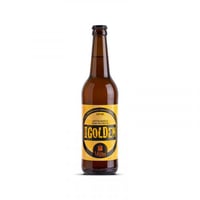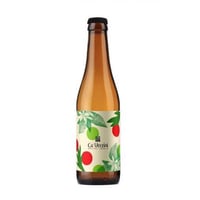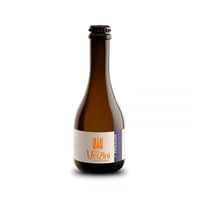The Best Italian Craft Beers
Malt, hops, yeast and water: all you need to do is make fresh, genuine and tasty craft beers! Ours are the authentic Italian ones produced by excellent and award-winning master brewers, who use only quality raw materials that enhance their fragrance, aiming at creating a unique and inimitable artisanal product, with aromas that evoke sensations irreproducible from the big beer industries. In our shop you can find our authentic Italian craft beers for sale online at a great price: let yourself be carried away by amber or dark, sweet or bitter notes and make evenings in the company of your friends more fun
.The Best Italian Craft Beers: chosen by us
The Best Italian Craft Beers: online sale
Beers: online sale of the best Italian crafts
On our portal we offer for sale online only authentic Italian craft beers of excellent quality. Beers of character and quality, the result of the imagination, commitment and skill of the artisan producers. Real beer, important, able to transform drinking into a unique experience.
Discover the entire selection of Spaghetti&Mandolino
Beer: why is this drink called that?
Have you ever wondered what the etymology of the term 'beer' is? The Italian word beer actually derives from the German “Bier” and is a loan that dates back to about the 16th century. Even in other languages, the word that indicates this very famous international drink, derives from the same German 'Bier': in French 'bière', in English 'beer', in Dutch 'bier'.
However, this is not the only way to indicate beer, since “ale” is also used in English. In ancient times, this word referred exclusively to hop-free beers, while today it refers to high-fermentation beers.
And why is it called 'Cerveza' or 'Cerveza' in Spanish and Portuguese? This form derives from the Latin 'cervēsia' or 'cer (e) vīsia', and is probably a pre-Indo-European Mediterranean residue such as' cerea 'or' caelia ', a fermented beverage used in Roman Spain.
History of Beer: the first beers date back a few millennia ago
Well yes, there are written sources that testify to the presence of this drink in Ancient Egypt and Mesopotamia, so we are talking about the 5th millennium BC.
In reality, more or less all cereals containing certain sugars can have a spontaneous fermentation, so it is possible that beverages similar to beer were developed more or less all over the world once the various populations became familiar with cereals.
In Mesopotamia, a Sumerian tablet from about 6000 years ago was found, which depicts some people drinking a drink with straw straws from a common container. What is perhaps the oldest existing beer recipe has also been found: in a Sumerian poem that honors Ninkasi, the patron deity of beer production, the production of beer from barley by means of bread is described.
And from Egypt and Mesopotamia, taking a step forward in time, we find evidence of the knowledge of beer even among the Greeks.
For the first Romans, this drink was of great importance, but then, in the republican period, it was surpassed by wine.
In the Middle Ages it was one of the most common soft drinks and was consumed daily by all social classes, even if historically beer is linked more to a lower social class.
During the Middle Ages, beer remained a household activity and only from the 14th and 15th centuries did its production gradually become an artisanal activity, and pubs and monasteries began to produce it on their own for mass consumption.
With the Industrial Revolution, the industrialization of beer became a reality, thanks also to innovations in the beer production process, such as the introduction of the thermometer and the density meter, fundamental tools for refining the technique.
We come to the 19th century, when the first beer productions in Italy were the Wührer of Brescia, the Pasqui of Forlì, the Peroni of Vigevano and Rome, and the Moretti of Udine.
So here's how beer has crossed ages, tribes and populations. Certainly we are not talking about the drink that is known today, since the procedures and certainly the taste are different, but all this makes us understand the story that is contained in a single mug.
Beer styles: some types compared
What are commonly referred to as types of beer are actually the so-called beer styles. Each style is characterized by specific raw materials, production process and organoleptic profile.
This classification allows us to immediately understand which beer we are dealing with.
For example, if we talk about Pils, Pilsnere or Pilsener, we know for sure that it is a clear and clear beer, with a low fermentation, with a taste characterized by a clear bitter note.
Weizen, on the other hand, is a highly fermented beer, slightly creamy, with an opaque blond color and a sweetish flavor with a strong sour note.
Another well-known and appreciated style, especially in summer, is definitely Blanche beer: full-bodied and dense, almost milky. Less filtered than the previous ones and with an important fruity aftertaste.
IPA also has a very fruity and floral taste, but the texture is different: it is in fact less full-bodied than Blanche, but the body remains of medium intensity.
IPA stands for Indian Pale Ale and is a beer that originated in England in the 1700s.
It is a high-fermentation beer characterized by a vigorous bitter taste, thanks to the large amount of hops used. The color of the IPA ranges from very pale yellow to deep amber.
Depending on the type of fermentation, an important brewing style is that of Lambic beers: traditional Trappist beers, originating in Belgium.
They are characterized by spontaneous fermentation, thanks to the action of yeasts present in the air that attack the sugars of the must left to rest in open tanks.
These are beers characterized by great acidity and special aromas.
The beer glass: that's why it's so important
As with wine tasting, even for beer, the glass is a fundamental tool that helps to grasp and appreciate all the organoleptic characteristics of the beverage in front of you.
Rim width and width are the two most important criteria on which the shape of the glass is based.
The width of the border is a characteristic that accompanies the intensity of the scents: a wide border favors the diffusion of the scents, while a narrower one concentrates them.
Therefore, if you have to taste a beer with a delicate scent, it is best to use a glass with a narrower edge.
As far as the width of the glass is concerned, it is functional to the diffusion of carbon dioxide and to contain the foam produced.
The narrower glasses limit the diffusion of the gas and retain the foam, while the wider ones favor the diffusion of CO2 and consequently the dissolution of the foam













